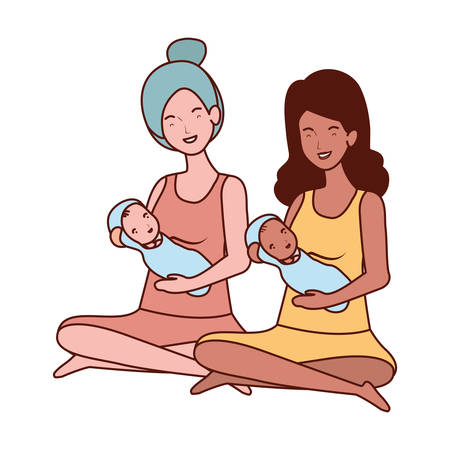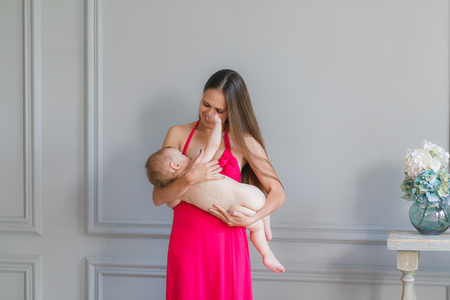1. The Benefits of Introducing a Pacifier
Many parents wonder whether introducing a pacifier is a good idea for their baby. While every child is different, pacifiers can offer several benefits when used appropriately. From providing comfort to reducing the risk of sudden infant death syndrome (SIDS), pacifiers play a valuable role in infant care.
Providing Comfort and Helping with Self-Soothing
Babies have a natural sucking reflex, which is why they often find comfort in sucking on their hands, bottles, or even pacifiers. A pacifier can serve as a reliable tool for self-soothing, helping babies calm themselves when they are fussy or unsettled. This can be especially useful during nap time, bedtime, or moments of distress.
Reducing the Risk of SIDS
Studies have shown that using a pacifier during sleep can lower the risk of SIDS. Experts believe that sucking on a pacifier may help keep the airway open and prevent deep sleep cycles that could lead to breathing difficulties. The American Academy of Pediatrics (AAP) recommends offering a pacifier at nap time and bedtime as a precautionary measure.
Helping with Sleep Patterns
Pacifiers can also contribute to better sleep routines. Since they help babies self-soothe, they may fall asleep more easily and stay asleep longer. However, its important to ensure that the baby does not become overly dependent on the pacifier to fall asleep, as this could lead to frequent nighttime wake-ups if the pacifier falls out.
Quick Overview of Pacifier Benefits
| Benefit | Description |
|---|---|
| Comfort & Soothing | Helps calm fussy babies and provides a sense of security. |
| SIDS Prevention | Pediatricians recommend pacifiers at sleep time to lower SIDS risk. |
| Aids Sleep | Makes it easier for babies to fall asleep and stay asleep longer. |
| Eases Discomfort | Sucking motion may help relieve minor discomforts like gas or teething pain. |
2. Potential Downsides and Considerations
While pacifiers can be a great tool for soothing babies, they also come with some potential downsides. Its important to understand these concerns so you can make an informed decision about whether and how to introduce a pacifier to your baby.
Nipple Confusion
If youre breastfeeding, introducing a pacifier too early may cause nipple confusion. Babies who get used to the feel of a pacifier might struggle with latching correctly during breastfeeding, which could lead to feeding difficulties. Experts often recommend waiting until breastfeeding is well-established—typically around 3 to 4 weeks—before offering a pacifier.
Dental Concerns
Long-term pacifier use can impact dental development. If a child continues using a pacifier beyond the age of 2 or 3, they may develop issues such as misaligned teeth or bite problems. The American Academy of Pediatric Dentistry suggests weaning off the pacifier by age 3 to reduce these risks.
| Age Range | Potential Dental Impact |
|---|---|
| 0-12 months | No significant dental concerns |
| 1-2 years | Minimal risk if usage is moderate |
| 2-3 years | Slight changes in bite alignment may begin |
| 3+ years | Higher risk of dental misalignment and bite issues |
Dependence on Pacifiers
Pacifiers can become a strong source of comfort for babies, which sometimes leads to dependence. This can create challenges when trying to wean them off later. Additionally, some babies wake up frequently at night looking for their pacifier, disrupting their sleep instead of improving it.
Tips to Reduce Pacifier Dependence:
- Avoid automatically offering the pacifier for every fuss; try other soothing methods first.
- Create a consistent bedtime routine that doesn’t rely solely on the pacifier.
- If your baby wakes up at night looking for the pacifier, consider gradually reducing nighttime use.
- Around 6 months, start limiting daytime use to naps and bedtime only.
The Right Balance
Pacifiers have their benefits, but being aware of potential drawbacks helps ensure they are used appropriately. By monitoring usage and knowing when to start weaning, you can help your baby enjoy the advantages of a pacifier without developing long-term issues.

3. Effect on Breastfeeding and Bottle-Feeding
Introducing a pacifier can have different effects on breastfeeding and bottle-feeding, depending on how and when it is used. Some parents worry that using a pacifier might interfere with feeding routines, milk supply, or even how well a baby latches onto the breast or bottle.
Impact on Breastfeeding
For breastfed babies, pacifier use can influence feeding habits in several ways:
- Nipple Confusion: Some newborns may struggle to switch between the breast and a pacifier, as the sucking techniques are different.
- Reduced Milk Supply: If a baby uses a pacifier too frequently instead of nursing, it may lead to less time at the breast, which can impact milk production.
- Poor Latch Development: Babies need to practice proper latching to effectively extract milk. Relying too much on a pacifier early on may affect their ability to latch correctly.
Impact on Bottle-Feeding
Bottle-fed babies may experience different effects from pacifier use:
- Sucking Reflex Satisfaction: Pacifiers can help satisfy the natural sucking reflex without leading to overfeeding.
- Pacing Feeds: Some babies who enjoy sucking for comfort may drink from a bottle too quickly. A pacifier can provide an alternative soothing method.
- No Direct Impact on Milk Supply: Unlike breastfeeding, bottle-feeding isn’t dependent on supply and demand, so a pacifier is less likely to cause feeding issues.
Comparison of Pacifier Effects on Feeding Methods
| Breastfeeding | Bottle-Feeding | |
|---|---|---|
| Nipple Confusion | Possible if introduced too early | No significant effect |
| Affects Milk Supply | If overused, it may reduce nursing frequency and milk production | No impact on milk supply |
| Latching Issues | Might interfere with developing a proper latch if used excessively | No direct effect on bottle latching |
| Satisfies Sucking Reflex | Might reduce unnecessary comfort nursing | A helpful way to prevent overeating |
Pacing Pacifier Use for Healthy Feeding Habits
If you’re breastfeeding, experts often recommend waiting until breastfeeding is well-established before introducing a pacifier—typically around 3 to 4 weeks old. For bottle-fed babies, using a pacifier strategically can help manage feeding pace while still allowing for natural comfort sucking.
4. Pacifiers and Infant Sleep Patterns
Pacifiers can play a significant role in shaping your babys sleep habits. They provide comfort, help with self-soothing, and may even promote longer sleep stretches. Understanding how pacifiers influence sleep patterns can help parents make informed decisions about their use.
How Pacifiers Help with Sleep Association
Babies often develop sleep associations—cues or objects that signal its time to sleep. A pacifier can become one of these associations, helping your baby settle down faster. When used consistently, it can create a soothing bedtime routine that signals relaxation and sleep.
The Role of Pacifiers in Self-Soothing
Self-soothing is an essential skill for babies as they learn to fall asleep independently. Sucking on a pacifier provides comfort and helps regulate emotions, reducing fussiness at bedtime. It can also be particularly helpful during nighttime awakenings when babies need reassurance but arent necessarily hungry.
Can Pacifiers Promote Longer Sleep Stretches?
Many parents find that using a pacifier can help their baby sleep for longer periods. Since sucking has a calming effect, it may prevent frequent wake-ups caused by minor disturbances. However, some babies might wake up if the pacifier falls out, requiring parental intervention to replace it.
Pros and Cons of Using a Pacifier for Sleep
| Pros | Cons |
|---|---|
| Helps babies fall asleep faster | Baby may wake up if the pacifier falls out |
| Aids in self-soothing during night wakings | Poor sleep association if over-relied upon |
| May reduce risk of sudden infant death syndrome (SIDS) | Potential dependency on the pacifier for sleep |
| Eases transitions between sleep cycles | Might interfere with oral development if used too long |
Tips for Using a Pacifier to Support Healthy Sleep
- Introduce it gradually: If your baby isn’t used to a pacifier, offer it gently during naps and bedtime.
- Avoid re-inserting constantly: If your baby wakes up every time the pacifier falls out, try encouraging other soothing techniques as well.
- Create a consistent bedtime routine: Use the pacifier as part of a predictable wind-down process to reinforce positive sleep habits.
- Aim for eventual weaning: As your baby grows, consider phasing out the pacifier to encourage independent sleep skills.
5. Tips for Introducing and Weaning a Pacifier
Introducing a Pacifier the Right Way
Introducing a pacifier can be a helpful tool for soothing your baby, but timing and technique matter. Here are some best practices:
Start at the Right Time
If youre breastfeeding, its best to wait until breastfeeding is well established—usually around 3 to 4 weeks—to avoid nipple confusion. If your baby is formula-fed, you can introduce a pacifier earlier.
Choose the Right Pacifier
Select a one-piece pacifier with ventilation holes and made from BPA-free materials. The shape should mimic the natural nipple to support oral development.
Offer It When Baby Is Calm
Avoid using a pacifier as the first solution when your baby cries. Instead, offer it when they are calm or after feeding to help with self-soothing.
Keep It Clean
Sterilize pacifiers regularly by boiling them or using a sterilizer, especially in the first few months. As your baby gets older, washing with soap and water will suffice.
Strategies for Weaning Off the Pacifier
Weaning off a pacifier can be challenging, but with patience and consistency, it can be done smoothly.
Pick the Right Time
The American Academy of Pediatrics recommends weaning between 6 months and 1 year to reduce risks like ear infections or dental issues. Avoid weaning during big life changes like moving or starting daycare.
Use Gradual Reduction
- Limit Use: Start by allowing the pacifier only during naps and bedtime.
- Shorten Usage: Take it away once your baby falls asleep instead of letting them have it all night.
- Create Distractions: Offer comfort through cuddles, a favorite blanket, or soft music instead of a pacifier.
The “Cold Turkey” Method
If your child is older (around 2-3 years), you might try completely removing the pacifier all at once. This works best if you prepare your child by talking about it beforehand.
Praise and Reward
If your toddler gives up the pacifier willingly, celebrate their achievement with small rewards like stickers or extra bedtime stories.
Paci-Weaning Timeline
| Age Range | Paci-Weaning Strategy |
|---|---|
| 0-6 months | No need to rush; start limiting use if desired. |
| 6-12 months | Begin reducing reliance on pacifiers during wake time. |
| 12-24 months | Avoid offering automatically; use only for sleep if necessary. |
| 2+ years | Create a plan for full weaning through gradual reduction or cold turkey. |
Paci-weaning takes time and patience, but with gentle encouragement and consistency, your little one will adjust successfully!


